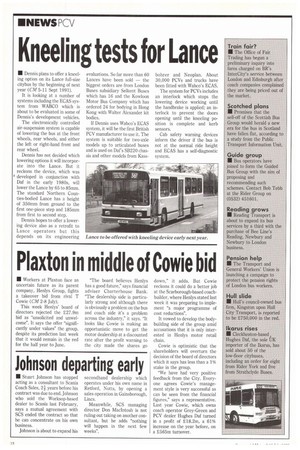Kneeling tests for Lance
Page 14

If you've noticed an error in this article please click here to report it so we can fix it.
• Dennis plans to offer a kneeling option on its Lance full-size citybus by the beginning of next year (CM 5-11 Sept 1991).
It is looking at a number of systems including the ECAS system from WABCO which is about to be evaluated in some of Dennis's development vehicles.
The electronically controlled air-suspension system is capable of lowering the bus at the front wheels, rear wheels, and either the left or right-hand front and rear wheel.
Dennis has not decided which lowering options it will incorporate into the Lance. But it reckons the device, which was developed in conjunction with Daf in the early 1980s, will lower the Lance by 65 to 85mm. The standard Northern Counties-bodied Lance has a height of 350mm from ground to the first one-piece step and 185mm from first to second step.
Dennis hopes to offer a lowering device also as a retrofit to Lance operators but this depends on its engineering evaluations. So far more than 60 Lances have been sold — the biggest orders are from London Buses subsidiary Selkent Buses which has 16 and the Kowloon Motor Bus Company which has ordered 24 for bodying in Hong Kong with Walter Alexander kit bodies.
If Dennis uses Wabco's ECAS system, it will be the first British PCV manufacturer to use it. The system is suitable for two-axle models up to articulated buses and is used on Dal's SB220 chassis and other models from Kass bohrer and Neoplan. About 30,000 PCVs and trucks have been fitted with Wabco's ECAS.
The system for PCVs includes an interlock which stops the lowering device working until the handbrake is applied; an interlock to prevent the doors opening until the kneeling position is complete and kerb sensors.
Cab safety warning devices inform the driver if the bus is not at the normal ride height and ECAS has a self-diagnostic system.












































































